Вы здесь
Facts of history of Bukhara.
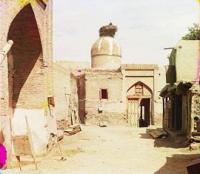
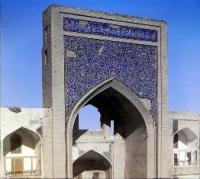
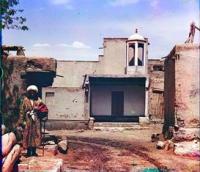
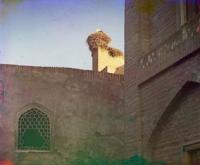
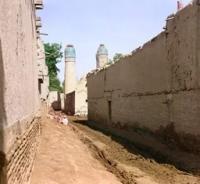
Destinations and routes in Bukhara and Great Silk Road.
“The first rule of the story is not to allow lies”
Great Silk Road in Bukhara & Kazakhstan.
For the first time the city of Bukhara is mentioned by Chinese travelers, in the II century BC. In the 6th century AD, the city is mentioned by the Chinese under the names Pu Ho, Nu Mi. The emergence of the city associated with various legends and traditions.
One of the legends says that the son of the Iranian king Siyavush arrived in Bukhara, married the daughter of the king Afrasiab and built the fortress Ark there. A historian of the 10th century Narshahi, originally from Bukhara, writes that not a single city had so many names like Bukhara.
he Chinese and Uighurs called the city of Bukhar, which means the location of idols. The well-known Russian scientist Barthold believes that Bukhara is derived from the Sanskrit (Old Indian) Bihar, which means a monastery. All these terms are close to the modern name of Bukhara.
The materials of the archaeological excavations suggest that the city originated no later than the 1st century AD. Its cultural layers, which in some places reach up to 20 meters in depth, also testify to the antiquity of the city.
The natural wealth of the oasis of Bukhara attracted the attention of neighboring states and foreign conquerors. In the 6th century BC, the Persian king Cyrus, and later Darius, seized the lands of Bukhara. The domination of the Persian kings on the territory of Bukhara lasted until 330 BC.
In 329 BC after the conquest of Iran by Alexander the Great, the territory of Bukhara (Sogdiana), like other parts of Asia, was taken over by the Greeks. The population actively resisted conquerors, whose domination in Sogdia lasted until the 2nd century BC.
From the Ist century BC Bukhara was part of the Kushan state. It was one of the largest state associations in Central Asia. It is assumed that the center was located in the area of present-day Kata-Kurgan (80 km from Samarkand). In the 5th century AD Bukhara became part of the state of Ephtalits, whose capital was the city of Paikend, 40 km from Bukhara.
In the VII century, the Arabs came to the historical arena, who in a short time took possession of Iran, Palestine, Egypt and other countries. In 709, after a bloody assault, the Arabs took the city of Bukhara. Bukhara before the conquest of the Arabs was a major trading and cultural center of Central Asia.
She had trade relations with Iran, India, China and other countries. The Arabs began to force the introduction of the religion of Islam. Arab rule led to popular uprisings. One of the largest uprisings of the time, led by Hashim ibn Hakim (Mukanna).
This uprising was called "The movement of people in white clothes." It took a wide range and covered the territory between Syr-Darya and Amu-Darya. But, despite the courage of the rebels, the uprising was crushed.
The dominant nobility of the Arabs, frightened by the popular movement, began to involve the local aristocracy in the government. In the 9th century, large Balkh landowners, the Samanids, named after the founder of the dynasty, Ismail Samani, became the rulers of Bukhara.
An extensive feudal state was formed, which occupied the territory of almost the whole of Central Asia with its capital in the city of Bukhara. The crafts, trade and culture of Central Asia have developed strongly. The appearance of the city itself has changed dramatically. Significantly increased population.
New quarters, bazaars, workshops appeared around Shakhristan. The administrative center of the city was Registan Square. There were sofas - the main institutions. The territory of the city was protected by a large wall, which had 11 gates.
In the Xth century, Bukhara became a center of high feudal culture. Many scientists, world-famous writers, artists worked here: the historian Narshahi, the poets Rudaki, Dakiki, the physician and mathematician, the encyclopaedist Abu Ali ibn Sina (Avicenna), the historian Belazuri, Tabari, Ibn-Miskawaih, etc.
In 999, the territory of the present Bukhara was conquered by the Karakhanids - newcomers from the Seven Rivers. The Karakhanids ruled until 1141, after which Bukhara was captured by new nomadic tribes - Kara-China. As a result of heavy oppression in 1206 an uprising broke out under the leadership of Malik Sanjar.
However, the neighboring state of Khorezm Shahs, taking advantage of the situation in Bukhara, suppressed the uprising on its own and seized Bukhara. The wealth of the oasis of Bukhara (Sogd) at the beginning of the XIII century attracted the attention of new conquerors - the Mongols. Under the leadership of Genghis Khan, they captured a significant part of Sogd.
In 1220, Genghis Khan, thanks to the betrayal of the clergy, and military leaders occupied the city of Bukhara. Having captured the city, the Mongols looted it. The inhabitants were enslaved. Households have been devastated.
In the second half of the XIIIth century, Bukhara began to gradually recover. Italian traveler Marco Polo, who visited Bukhara at that time, called it a city of great grandeur. But still the people could not accept their plight and often revolted against the Mongols.
Amir Timur, took advantage of the precarious situation in the region, came to power. In 1370, Bukhara became part of the Timurid state. Bukhara lost its political significance, as the city of Samarkand became the capital.
Under Timur’s grandson, Ulugbek, Bukhara became the cultural center of the feudal world. In 1506, Bukhara was conquered by the Sheibanids, a new dynasty formed from sedentary and nomadic Uzbek tribes. In the early years of this dynasty, Samarkand remained the capital.
From the second half of the 11th century, under Abdullakhan (1557 - 1598), Bukhara became the political center of the state, behind which the name of the Bukhara Khanate was established. During the reign of the Sheibanids, a significant rise was observed in the economy of the Bukhara Khanate.
Most of the architectural structures, which mainly determine the appearance of the old city, were built during this period. In the second half of the 16th century, the Dzuybar sheiks, who owned vast lands in the environs of Bukhara (Chor-Bakr), played an important role in the rule of the Sheibanids dynasty.
In 1595, the new Ashtrakhanid dynasty, named after the Astrakhan kings, began to govern the Bukhara Khanate. By the end of the dynasty (XVIIth century), the Bukhara Khanate lost its economic and cultural significance.
The decline of the economy of the Khanate caused a reduction in construction in the city. In 1740, the Persian king Nadir undertook a campaign against Bukhara. Having conquered the Bukhara Khanate, he left his successor, Muhammad Rahim, in the city.
The latter soon declared himself Emir and founded a new dynasty - Mangyt (1753 - 1920). This dynasty lasted until the fall of the emirate. The period of Mangitov’s rule was the darkest in the history of Bukhara. Crafts, science, poetry, art of that time came to decline.
Trade has shrunk. In the 60s – 70s of the XIXth century, the tsarist government of Russia began to seize the Bukhara emirate. The emirate of Bukhara was not prepared to wage war with Russia. The army did not represent a serious combat force. In 1868, the Bukhara troops were defeated in the bloody battles of Zerabulak.
At the request of the Emir, peace was concluded, according to which Russia established a protectorate over the Emirate of Bukhara. On September 2, 1920, the Bukhara people's revolution broke out in Bukhara, as a result of which the emir of Bukhara was overthrown and the Bukhara People's Soviet Republic was proclaimed, which existed until 1924.
After that, Bukhara, as the administrative center of the Bukhara region, was incorporated into the Uzbek Socialist Republic.
Enlightener:
VG Saakov "History of Bukhara". Shark Publishing House, 1996. “Bukhara. Masterpieces of Central Asia. Historical guide to Bukhara. year 2012. "Bukhoro Bukhara Bukhara" In Uzbek, English and Russian. Publishing House "Uzbekistan", Tashkent 2000. Muhammad Narshahi. History of Bukhara. Tashkent. 1897 (translated by N. Lykoshin). V.G. Saakov Architectural masterpieces of Bukhara. Bukhara regional society "Kitabhon" Uz SSR, Rovno 1991, Robert Almeyev. The history of ancient Bukhara. (Edited by Academician of the Academy of Sciences of the Republic of Uzbekistan Rtveladze E.V.)







